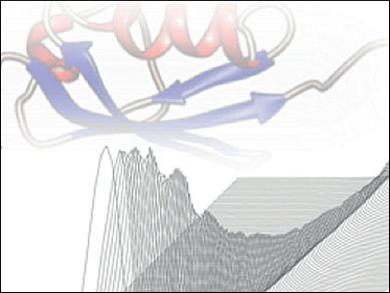Dennis Kurzbach, Ecole Normale Supérieure (ENS), Paris, France, and colleagues have developed a method to investigate the structure and function of so-called intrinsically disordered proteins (IDPs). IDPs do not show a ordered 3D structure. Their study under physiological conditions is often impeded by weak and overlapping NMR signals. The new technique analyzes these proteins under near-physiological conditions at atomic resolution using NMR spectroscopy. Understanding this class of biomolecules is important because it represents approximately 30 % of the human genome. Since IDPs often constitute important signaling hubs in the cellular environment, their malfunction is frequently associated with severe conditions such as cancer or Alzheimer’s disease.
The researchers teamed up with Bruker BioSpin, a company that provided a prototype apparatus to create “hyperpolarized” solvents. This hyperpolarization leads to a strong signal amplification in NMR spectra of IDPs. This allows the proteins to be studied while they exchange their protons with the surrounding hyperpolarized solvent.
As a proof of concept, the method was applied to the extracellular matrix protein osteopontin (OPN), which is associated with metastasis and several types of cancer. The team was able to monitor the folding and unfolding of individual residues of the protein induced by the presence of ligands like heparin.
- Investigation of Intrinsically Disordered Proteins through Exchange with Hyperpolarized Water,
Dennis Kurzbach, Estel Canet, Andrea G. Flamm, Aditya Jhajharia, Emmanuelle M. M. Weber, Robert Konrat, Geoffrey Bodenhausen,
Angew. Chem. Int. Ed. 2016.
DOI: 10.1002/anie.201608903



